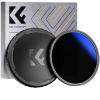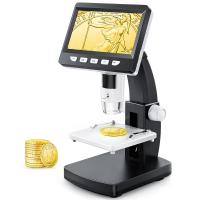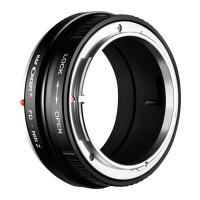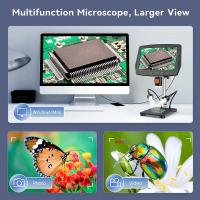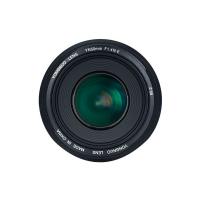What Does A Scanning Electron Microscope Do?
The Role and Functionality of a Scanning Electron Microscope

In the vast field of scientific research, technological tools play an indispensable role in understanding the intricate details of the world around us. Among these tools, the Scanning Electron Microscope (SEM) stands out as a remarkable instrument that allows researchers to examine materials at micro- and nanoscale levels. But what exactly does a SEM do, and why is it so significant?
---
Understanding the Basics of Scanning Electron Microscopy
A Scanning Electron Microscope uses a focused beam of electrons to scan the surface of a specimen, generating detailed, high-resolution images. Unlike traditional optical microscopes, which rely on visible light and glass lenses to magnify objects, SEMs use electrons, which have much shorter wavelengths than light, enabling them to achieve much higher magnifications and resolutions.
The SEM operates by:
1. Emitting a Beam of Electrons: A finely focused electron beam is directed at the specimen.
2. Interaction with the Sample: The electrons interact with the sample's surface, producing signals that carry information about the sample's composition, texture, and topography.
3. Detection and Analysis: Detectors capture these signals and convert them into images or data for analysis.
---
Key Capabilities of a SEM
1. High-Resolution Imaging
SEMs provide exceptional detail, with resolutions down to nanometers. This capability allows researchers to visualize the microscopic structures of materials, such as the arrangement of atoms or the surface morphology of cells and tissues.
2. Surface Topography Analysis
By studying the surface features of a material, SEMs help in understanding the texture, shape, and microstructural characteristics of a sample. This is crucial in fields like materials science, geology, and biology.
3. Elemental Composition
Many SEMs are equipped with energy-dispersive X-ray spectroscopy (EDS) systems, which enable the identification and quantification of elemental composition at specific points or across entire areas of a sample.
4. 3D Imaging and Depth Analysis
SEMs can create three-dimensional reconstructions of surfaces by varying the angle of electron beams or detectors, which is invaluable in visualizing complex structures.
---
Applications Across Disciplines
The versatility of SEMs makes them indispensable in various fields:
1. Materials Science
- SEMs are used to study the microstructure of materials, such as metals, ceramics, and polymers.
- They aid in analyzing grain boundaries, fractures, and coatings, contributing to the development of stronger and more durable materials.
2. Biology and Medicine
- In life sciences, SEMs are used to visualize the detailed architecture of cells, tissues, and microorganisms.
- They assist in studying surface characteristics and interactions, such as how cells adhere to surfaces or how pathogens invade tissues.
3. Forensic Science
- SEMs help forensic experts analyze evidence like gunshot residue, paint chips, or fiber morphology.
- The high resolution enables precise identification, which can be critical in criminal investigations.
4. Semiconductor and Electronics
- The semiconductor industry relies on SEMs to inspect microchips, detect defects, and ensure quality control during manufacturing.
- SEMs enable visualization of circuitry at the nanoscale, essential for advancing miniaturization and performance in electronics.
5. Geology and Environmental Science
- In geology, SEMs examine mineral composition, texture, and weathering processes in rocks and soil samples.
- Environmental scientists use SEMs to study particulate matter, contributing to air quality research and pollution control.
---
How SEMs Work: Step-by-Step
The process of obtaining an image or analysis using a SEM involves several stages:
1. Sample Preparation
- Samples must often be conductive. Non-conductive materials are typically coated with a thin layer of conductive material (e.g., gold or carbon).
- Biological specimens require special preparation, such as dehydration and coating, to withstand the vacuum environment of the SEM chamber.
2. Electron Beam Generation
- Electrons are generated by a heated filament or field emission source and focused into a narrow beam using electromagnetic lenses.
3. Scanning and Interaction
- The electron beam scans the sample in a raster pattern. As electrons hit the sample, they produce various signals:
- Secondary Electrons: Provide high-resolution images of surface topography.
- Backscattered Electrons: Offer contrast based on atomic number differences in the material.
- Characteristic X-rays: Used in elemental analysis.
4. Signal Detection and Image Formation
- Detectors collect the emitted signals, which are then processed to create an image or generate compositional data.
---
Challenges and Limitations
Despite its impressive capabilities, SEMs are not without limitations:
1. High Cost
- The cost of purchasing and maintaining a SEM is significant, making it accessible primarily to well-funded institutions and industries.
2. Complex Sample Preparation
- The vacuum environment and need for conductivity require specialized preparation, which can be time-consuming and alter the sample.
3. Limited Penetration Depth
- The electron beam interacts primarily with the surface layers of a sample, which may not provide insights into the internal structure.
4. Training and Expertise
- Operating a SEM and interpreting its data requires significant training and expertise, limiting its use to skilled personnel.
---
Future Trends in SEM Technology
The development of SEMs continues to evolve, addressing current challenges and expanding their applications:
1. Miniaturization and Portability
- Advances in technology are making SEMs more compact and accessible, enabling their use in fieldwork or smaller laboratories.
2. Enhanced Automation
- Automation in sample handling, image acquisition, and data analysis is improving efficiency and reducing the expertise required for operation.
3. Cryo-SEM
- Cryogenic techniques preserve biological samples in their natural state, expanding the application of SEMs in life sciences.
4. Hybrid Microscopy
- Combining SEM with other microscopy techniques, such as transmission electron microscopy (TEM) or atomic force microscopy (AFM), provides complementary data for comprehensive analysis.
---
Practical Insights for Researchers
If you are considering the use of a SEM in your research, here are some practical tips:
- Understand Your Research Goals: Clearly define what you want to achieve with SEM analysis—whether it's imaging, compositional analysis, or both.
- Invest in Training: Proper training in SEM operation and data interpretation is crucial to maximize its potential.
- Optimize Sample Preparation: Ensure your samples are adequately prepared for SEM analysis to avoid artifacts or distortions in the data.
- Collaborate with Experts: Work with experienced microscopists or institutions to overcome initial learning curves and refine your methodology.
---
Conclusion
A Scanning Electron Microscope is an extraordinary tool that opens a window into the microscopic world, enabling groundbreaking discoveries across disciplines. Its ability to provide detailed images, analyze surface topography, and identify elemental composition makes it indispensable in scientific research and industry. While SEM technology does come with challenges, ongoing advancements promise to make it more accessible, efficient, and versatile in the future. For researchers and professionals, mastering SEM technology is not just an asset but a gateway to deeper understanding and innovation in their fields.


